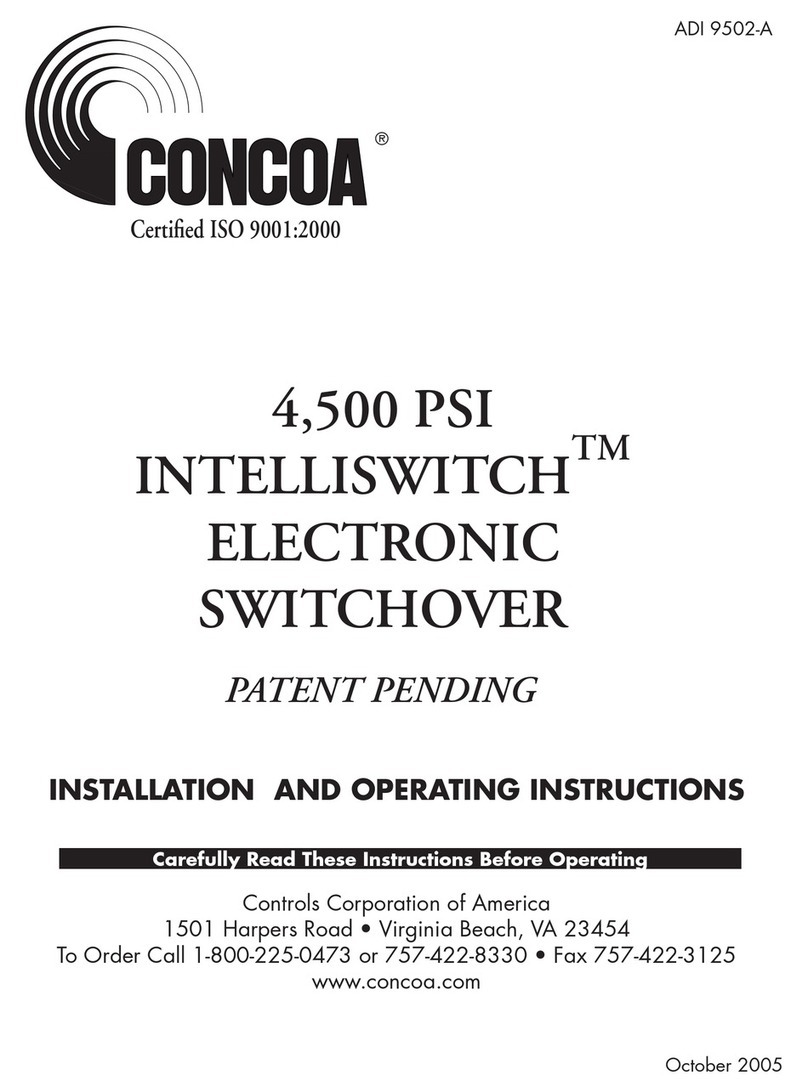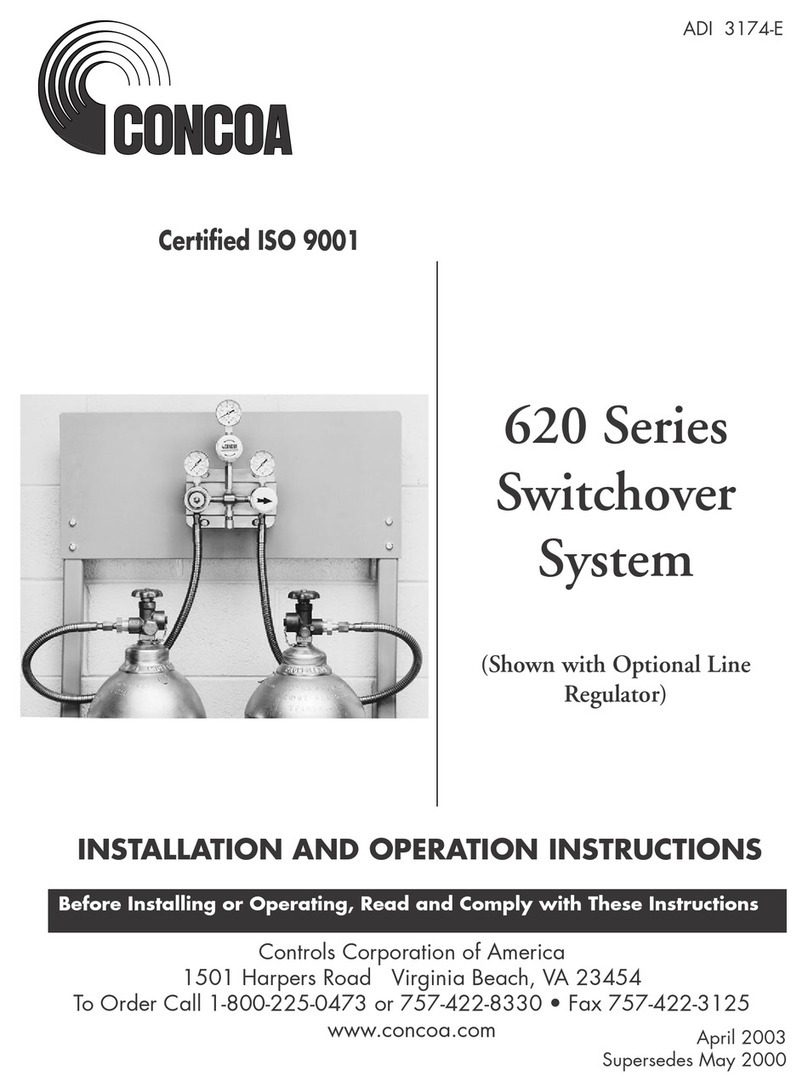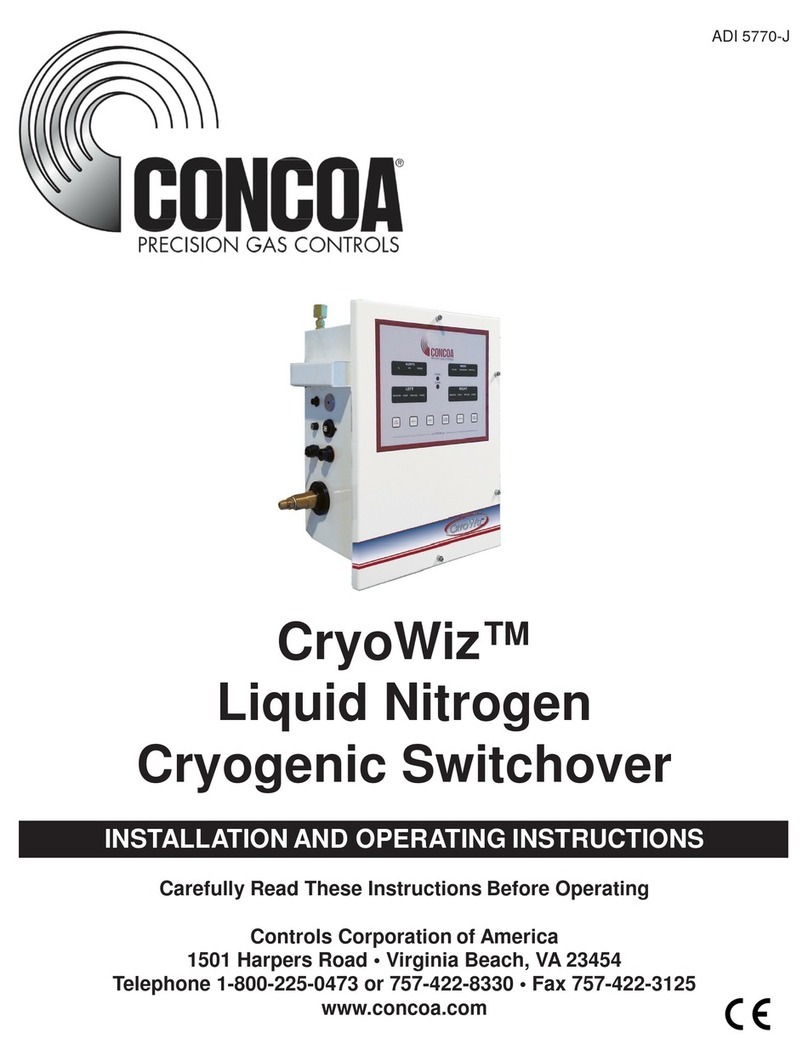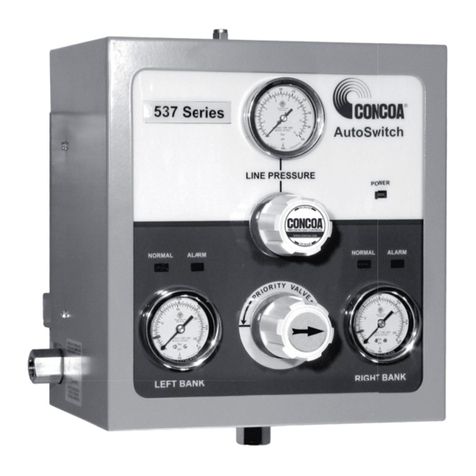
4 5
INTENDED USE OF PRODUCT
The brass 621 Series autoswitch system is intended for use in laserpurity, non-corrosive applications. Please note
the safety information shown in the later sections.
USER RESPONSIBILITY
The User of this equipment should follow all labeling, installation and operation instructions when using this
equipment. It is recommended that the user review all safety precautions listed in the safety section of this manual.
Know the properties and special handling requirements of the gas being used. Many gases are dangerous (ammable,
toxic, corrosive , etc.) Consult with the cylinder distributor for the proper use of the cylinders and any restrictions in
their use. This equipment must be checked periodically. Improperly working equipment should not be used. Broken,
worn, distorted, contaminated, or missing components should be replaced by a trained technician immediately.
CUSTOMER ASSISTANCE
In the event of equipment failure, call the CONCOA Customer Assistance Line: 1-800-225-0473. Please be prepared
to provide the model number and serial number of the equipment involved, in addition to some details regarding its
application. This would include inlet and outlet pressures, ow rate, environmental conditions, and gas service.
SAFETY
Carefully read and comply with these instructions before installing or operating any high pressure gas manifold. These
manifolds are designed, manufactured, and tested to conform to industry standards for safety for high pressure gas
manifolds for maximum inlet pressure of 3000 pounds per square inch (200 bar), working pressure.
Always observe the following safety practices:
√ Store cylinders with valve caps screwed on, and cylinders chained to a supporting wall or column.
√ Handle cylinders carefully and only with valve caps screwed on. The cap will prevent the cylinder valve
from breaking off at the top of the cylinder if the cylinder is accidentally dropped or falls over. The cap also
protects the cylinder valve from damage to screw threads, which could cause leaky connections.
√ Due to the highly combustible nature of hydrogen, methane, ethylene and fuel gases, all manifolds used
with this gas are provided with ashback arrestors to stop any burning gas in the pipeline from getting back
to the manifold or cylinders. Flashback arrestors are either water lled or dry check valve type. Gas owing
from the regulators on the manifold ows through the ashback arrestor to the pipeline. Also, arrestors on
pigtails are required for acetylene service.
√ Keep all cylinders away from any source of high temperature (not over 120° F, 50° C) or possible re hazards.
High-pressure gas contained in a closed cylinder becomes increasingly dangerous when exposed to high
temperature because pressure increases and the strength of the cylinder decreases.
√ No smoking should be permitted near oxygen, nitrous oxide, ammable gases and ammable mixtures and
in area where cylinders are stored.
√ Where oxygen or nitrous oxide is used, the manifold and cylinders must be kept clean. No oil, grease, or
combustible substances should come in contact with oxygen or nitrous oxide storage or handling equipment.
Such materials in contact with oxygen or nitrous oxide are readily ignitable and when ignited, will burn
intensely.
√ Never lift gas cylinders with a magnetic lifting device.

































